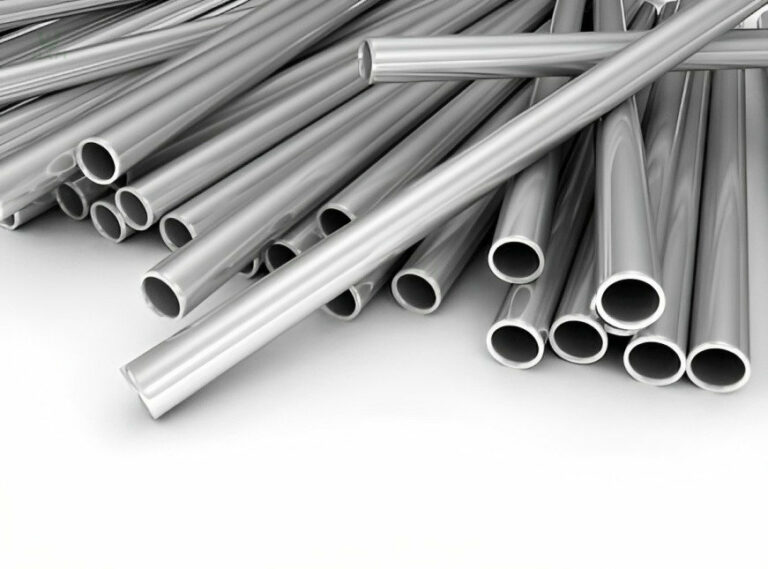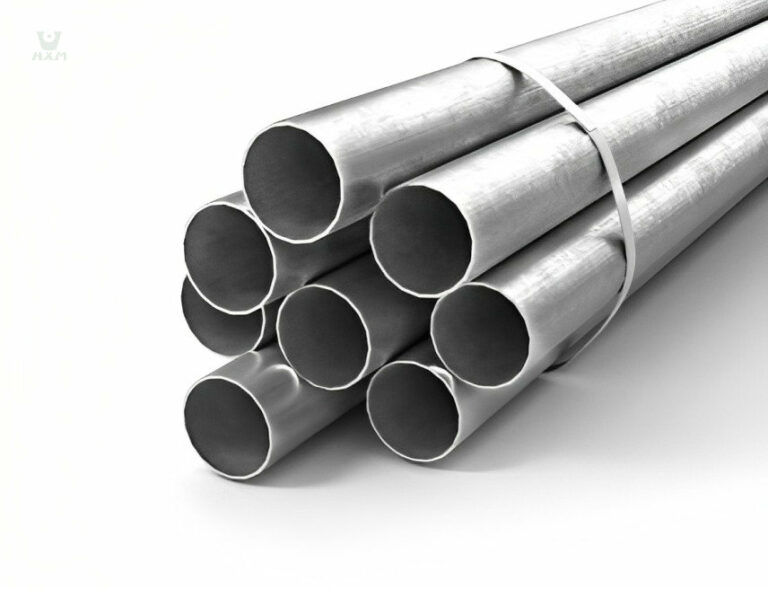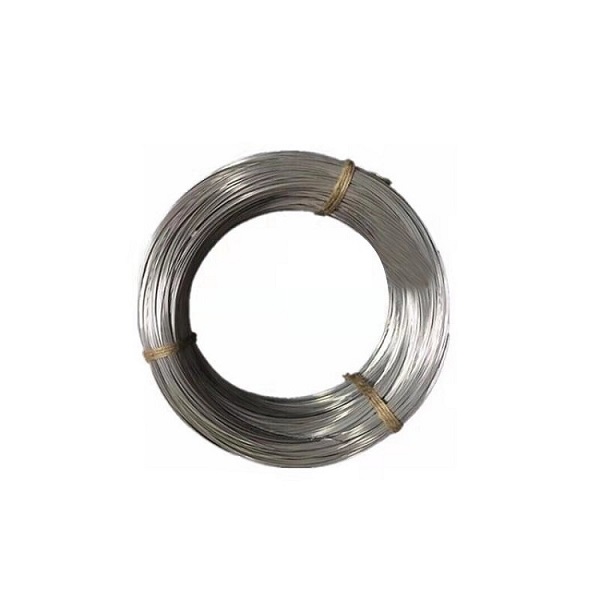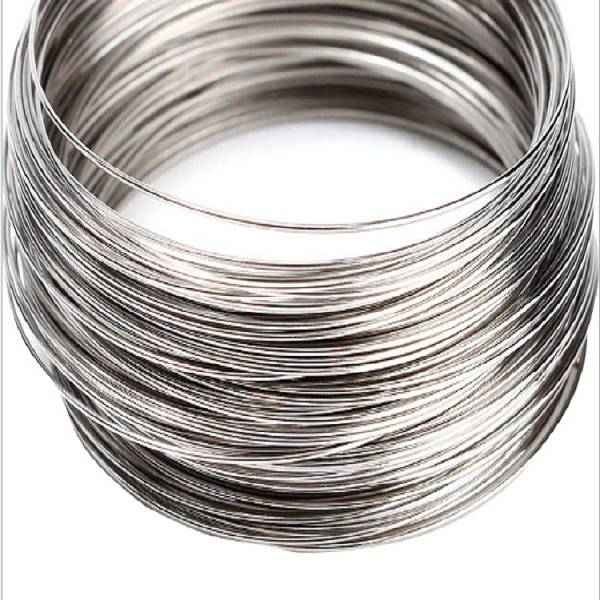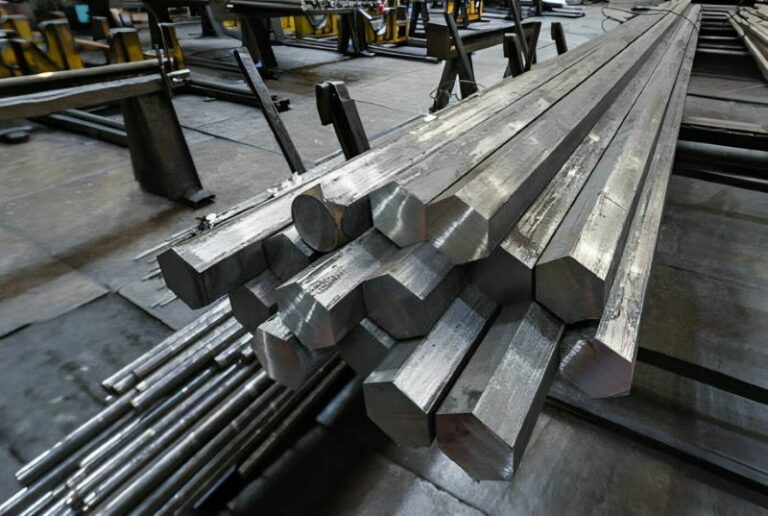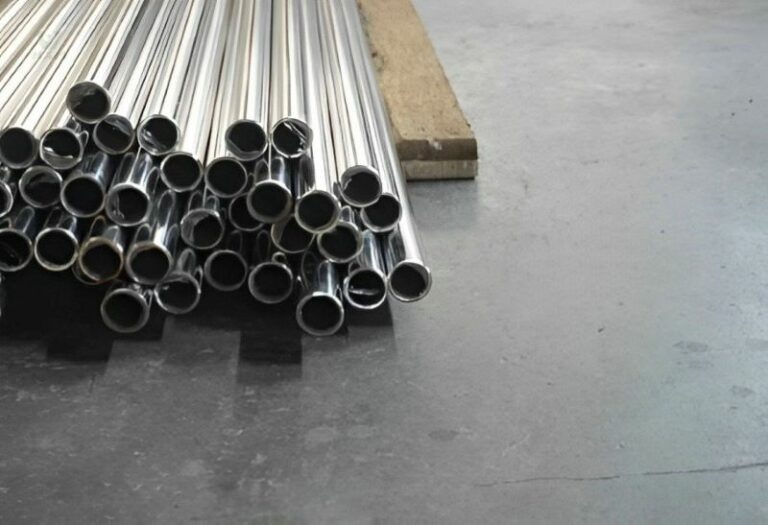Stainless Steel Checker Plate Suppliers
- Thickness: 1mm – 6mm
- Width: 600mm – 1500mm, the narrowed products pls check in strip products
- Length: 500mm-12000mm
- Finish: 2B, 2D, Black, NO.1, Anneal pickling
- Main Grade: 201, 304, 316L, 430
- MOQ: 2MT
Product Description of stainless steel checker plate
Stainless Steel checker plate are also known as, stainless steel tread plate, stainless steel diamond plate, stainless steel patterned plate, stainless steel checkerboard, and stainless steel chequer plate.
Raised patterns on checker plate stainless come in a variety of shapes and sizes, including lentils, diamonds, round beans, dots, flat hybrids, and so on. These patterns are designed to provide maximum traction and slip resistance, even in wet or slippery conditions. This greatly improves the safety and stability of people walking, and can effectively prevent people from slipping or falling on wet or slippery floors, so it is widely used in stairs, corridors, platforms, runways, docks, and other places. At the same time, its surface is flat and beautiful, without wear and tear, cracks, etc. It has a long life span and does not need frequent replacement, which can save maintenance costs and time for users.
As a high-end building material, stainless steel checker plate also has the advantages of environmental protection, hygiene, etc., will not affect human health, are easy to clean and disinfect, and can provide users with a safer, healthier, more comfortable use of the environment.
Advantages of stainless steel checker plate
- Long-term durability, ease of cleaning and maintenance, and eco-friendliness.
- Superior performance in high-temperature, humid, and corrosive environments.
- Enhance safety in workplaces and public spaces, reducing the risk of slips and falls.
Purchase Guide---Stainless Steel Checker Plate
- Selecting the Right Size and Specification: Determine the appropriate dimensions and specifications of stainless steel checker plate based on your specific requirements and application. Consider factors such as thickness, hole size, and surface pattern to ensure the best fit for your project.
- Placing an Order: Ordering stainless steel checker plate is simple and convenient. You can place your order directly through our website by selecting the desired size, quantity, and specifications. Alternatively, you can contact our sales team for personalized assistance and guidance.
- Customization Options: We offer customization options to meet your unique needs. If you require special sizes, shapes, or surface finishes, our team can work with you to create customized stainless steel checker plates that align with your project requirements.
- Shipping and Delivery: Once your order is placed, our team will process it promptly. We offer fast and reliable shipping options to ensure timely delivery of your stainless steel checker plates. You can track your order status and estimated delivery date through our online platform.
- Customer Support: Our dedicated customer support team is available to assist you throughout the purchasing process. If you have any questions or need assistance with selecting the right product, feel free to reach out to us via phone, email, or live chat. We are committed to providing exceptional service and ensuring your satisfaction with every purchase.
Application of Stainless Steel Checker Plate
Because of its surface rib bar, the effect may be utilized as functioning platform pedals, mill escalators, the ground, boat decks, automobile floors, and so forth. The look of this plate, non, fortify the functionality, and other benefits, and conserving steel, around the ground, machinery, shipbuilding, and other areas in transport, building, decoration, and gear have a vast selection of applications. The usage of the square to the component’s mechanical functionality, of the plank, isn’t high, so the caliber of the pattern is the pattern to blossom rate, pattern height gap, and pattern height. Currently available in the marketplace from the thickness of 1.0-6mm which ranges in the width of this common1219 1250,1500 mm.
Checkered plates are Utilized at the surface of this lenticular or diamond-shaped pattern of steel, workshop, stair climbers, and large gear or boat walkways. The dimensions of this plate rely on simple thickness (excluding the thickness of the rib).
Pattern board height is not less than 0.2 times the thickness of the substrate; in a complete pattern, the pattern allows a height of more than half the thickness tolerance of their regional slight burr.
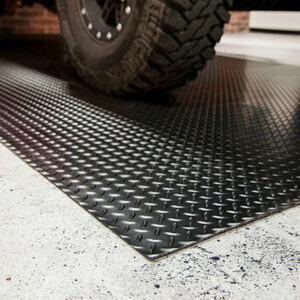
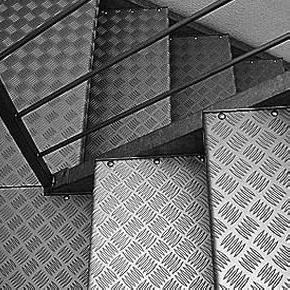
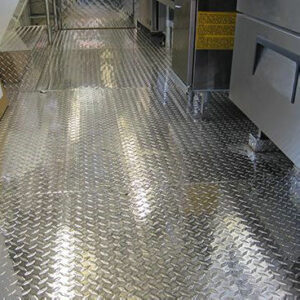
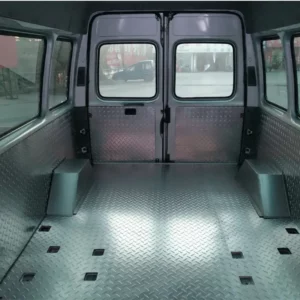
Features of Stainless Steel Checker Plate
- Excellent slip resistance: The surface of stainless steel checker plate is specially designed with features such as corrugations, grooves, or small raised dots. These designs not only enhance the aesthetics but also effectively increase surface friction, providing users with stable footing and effectively preventing slip accidents. Whether in wet or oily environments, stainless steel anti-slip plates exhibit good anti-slip effects.
- Strong corrosion resistance: Stainless steel checker plates made of high-quality stainless steel materials possess excellent corrosion resistance. Whether in damp, acidic, or other harsh environments, they maintain stable performance, resisting rust or corrosion, ensuring long-term effectiveness.
- High strength and rigidity: Stainless steel checker plates have high strength and rigidity, capable of withstanding large loads without deformation or fracture. This enables them to function reliably in high-traffic areas such as shopping malls, hospitals, and factories, ensuring pedestrian safety.
- Easy to clean and maintain: The smooth surface of stainless steel checker plates is not prone to dirt and debris accumulation, making cleaning very convenient. Additionally, their rugged durability reduces the frequency and cost of maintenance, saving users a considerable amount of time and money.
- Elegant appearance: Stainless steel checker plates not only offer practicality but also boast excellent decorative effects. With a strong metallic texture and smooth appearance, they harmonize well with various environments, enhancing overall aesthetics.
Production Process of Stainless Steel Checker Plate
Usually, there are 2 production processes for the checker plate, one is wrapped with the NO.1 finish, and the alternative is a cold press with NO.1 or 2 2B complete. Hot rolled is more pricey than cold press.
The manufacturing process of stainless steel checker plates mainly includes the following steps:
- Material Preparation: First of all, you need to choose high-quality stainless steel material and cut and process it according to the requirements.
- Surface Treatment: The surface of the cut stainless steel plate will be treated, usually by passivation, sandblasting, grinding, etc., for subsequent processing and coating treatment.
- Processing and Forming: The surface-treated stainless steel plate is processed and formed, usually by stamping, shearing, bending, etc., in order to make checker plates of different shapes and specifications.
- Embossing Treatment: The processed stainless steel plate will be embossed by an embossing machine in order to form different patterns and bumps to improve the anti-slip performance.
- Coating Treatment: According to the need, the stainless steel checker plate can be coated to enhance its anti-corrosion, anti-scratch, and other properties, common coating materials include polyester, polyurethane, polyimide, etc.
- Inspection and Packaging: Inspection and packaging of the fabricated stainless steel checker plate to ensure product quality and safety
How Durable is Diamond Plate
Diamond plate known as checker plate, is highly durable due to its rugged construction. aluminum diamond plate is highly durable and long-lasting. Diamond plate steel’s features raised diamond-shaped patterns that provide excellent traction and strength. This design makes diamond plate resistant to corrosion, impact, and wear, making it suitable for various applications such as flooring, ramps, and industrial settings.
Specification of Stainless Steel Checker Plate
Main Grade Description in Different Standard
Chemical Components of Main Grade in Different Standard
| 201 | C % | Si % | Mn % | P % | S % | Ni % | Cr % | Mo % | N % |
| ASTM | 0.15 | 1 | 5.5-7.5 | 0.05 | 0.03 | 3.5-5.5 | 16.0-18.0 | – | 0.25 |
| DIN/EN | 0,15 | 1,00 | 5,5-7,5 | 0,045 | 0,015 | 3,5-5,5 | 16,0-18,0 | – | 0,05-0,25 |
| JIS | 0.15 | 1 | 5.5-7.5 | 0.06 | 0.03 | 3.5-5.5 | 16.0-18.0 | – | 0.25 |
| GB | 0.15 | 1 | 5.5-7.5 | 0.05 | 0.03 | 3.5-5.5 | 16.0-18.0 | – | 0.05-0.25 |
| 304 | C % | Si % | Mn % | P % | S % | Ni % | Cr % | Mo % | N % |
| ASTM | 0.08 | 0.75 | 2 | 0.045 | 0.03 | 8.0 – 10.5 | 18.0-20.0 | – | 0.1 |
| DIN/EN | 0,07 | 1,00 | 2,00 | 0,045 | 0,015 | 8,0 – 10,5 | 17,5-19,5 | – | 0,10 |
| JIS | 0.08 | 1 | 2 | 0.045 | 0.03 | 8.0 – 10.5 | 18.0-20.0 | – | – |
| GB | 0.08 | 1 | 2 | 0.045 | 0.03 | 8.0 – 10.0 | 18.0-20.0 | – | – |
| 316L | C % | Si % | Mn % | P % | S % | Ni % | Cr % | Mo % | N % |
| ASTM | 0.03 | 0.75 | 2 | 0.045 | 0.03 | 10.0-14.0 | 16.0-18.0 | 2.00-3.00 | 0.1 |
| DIN/EN | 0,030 | 1,00 | 2,00 | 0,045 | 0,015 | 10,0-13,0 | 16,5-18,5 | 2,00-2,50 | 0,10 |
| JIS | 0.03 | 1 | 2 | 0.045 | 0.03 | 12.0-15.0 | 16.0-18.0 | 2.00-3.00 | – |
| GB | 0.03 | 0.75 | 2 | 0.045 | 0.03 | 10.0-14.0 | 16.0-18.0 | 2.00-3.00 | 0.1 |
| 430 | C % | Si % | Mn % | P % | S % | Ni % | Cr % | Mo % | N % |
| ASTM | 0.12 | 1 | 1 | 0.04 | 0.03 | 0.75 | 16.0-18.0 | – | – |
| DIN/EN | 0,08 | 1,00 | 1,00 | 0,04 | 0,015 | – | 16,0-18,0 | – | – |
| JIS | 0.12 | 0.75 | 1 | 0.04 | 0.03 | – | 16.0-18.0 | – | – |
| GB | 0.12 | 1 | 1 | 0.04 | 0.03 | 0.75 | 16.0-18.0 | – | – |
Mechanical Property of Main Grade in Different Standard
| 201 | Y.S./Mpa ≥ | T.S./Mpa ≥ | E.L./%≥ | HB≤ | HRB≤ | HBW≤ | HV≤ |
| ASTM | 260 | 515 | 40 | – | 95 | 217 | – |
| JIS | 275 | 520 | 40 | 241 | 100 | – | 253 |
| GB | 205 | 515 | 30 | - | 99 | – | - |
| 304 | Y.S./Mpa ≥ | T.S./Mpa ≥ | E.L./%≥ | HB≤ | HRB≤ | HBW≤ | HV≤ |
| ASTM | 205 | 515 | 40 | – | 92 | 201 | – |
| JIS | 205 | 520 | 40 | 187 | 90 | – | 200 |
| GB | 205 | 515 | 40 | – | 92 | 201 | 210 |
| 316L | Y.S./Mpa ≥ | T.S./Mpa ≥ | E.L./%≥ | HB≤ | HRB≤ | HBW≤ | HV≤ |
| ASTM | 170 | 485 | 40 | – | 95 | 217 | – |
| JIS | 175 | 480 | 40 | 187 | 90 | 200 | |
| GB | 170 | 485 | 40 | – | 95 | 217 | 220 |
| 430 | Y.S./Mpa ≥ | T.S./Mpa ≥ | E.L./%≥ | HB≤ | HRB≤ | HBW≤ | HV≤ |
| ASTM | 205 | 450 | 22 | – | 89 | 183 | – |
| JIS | 205 | 450 | 22 | 183 | 88 | – | 200 |
| GB | 205 | 450 | 22 | – | 89 | 183 | 200 |
Stainless steel checker plate, with their outstanding slip resistance, corrosion resistance, high strength and rigidity, as well as elegant appearance, have become the ideal choice for ensuring pedestrian safety in numerous locations. Whether in commercial spaces, industrial plants, or public facilities, they play an indispensable role in providing users with stable and reliable walking environments.
Located in Shanghai, China, Huaxiao Stainless Steel is a professional supplier of stainless steel checker plates. We have a rich product line and diverse pattern designs to meet the needs of different customers. Whatever size or pattern of stainless steel checker plates you require, we can provide the best options for you. Additionally, we have professional transportation and sales departments to ensure that your goods are delivered safely and on time, providing you with a worry-free shopping experience.
If you are planning to purchase stainless steel sheet and plate, feel free to contact Huaxiao Stainless Steel, and we will provide you with a detailed free quotation.


